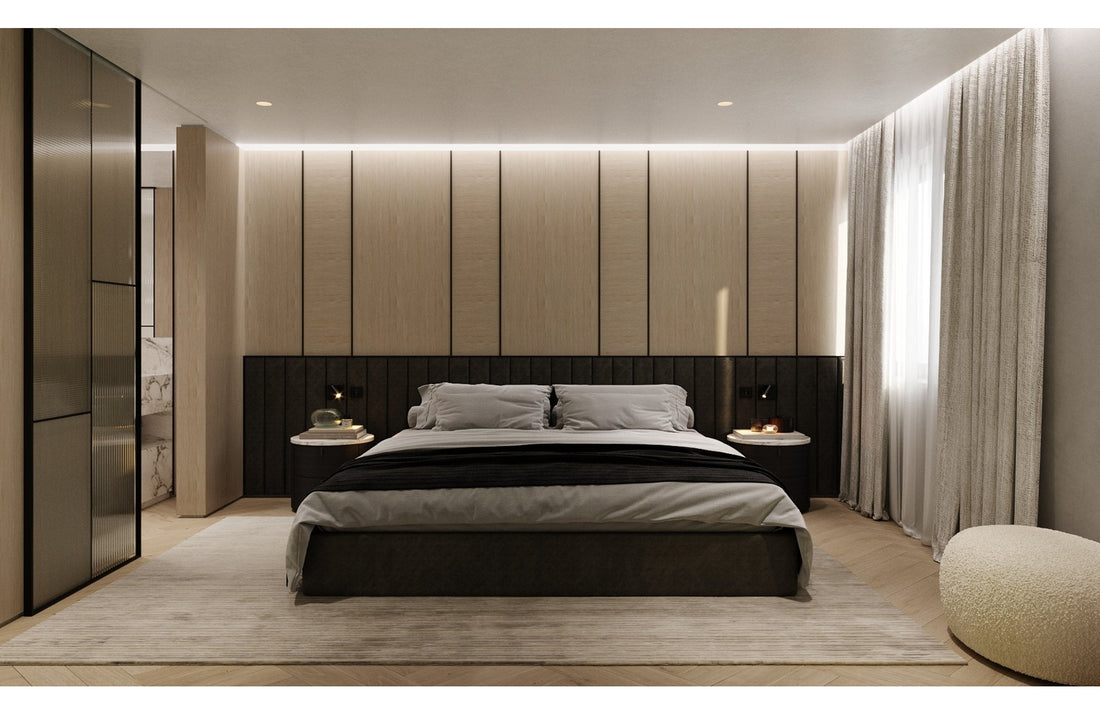
The Invisible Art – How Lighting Design Shapes Emotion Without Being Seen
Share
Lighting design is often most successful when you don’t notice it. You feel its impact—the calm, the warmth, the focus—but you can’t quite point to where it’s coming from. This is the essence of invisible lighting design: light that enhances architecture, mood, and emotion without drawing attention to itself.
In a world saturated with visual noise, subtle lighting offers balance. It brings harmony, depth, and atmosphere to a space while letting materials, textures, and forms shine on their own.
Why Invisible Lighting Matters
The magic of invisible lighting lies in how it transforms a room without demanding the spotlight. It’s not about decorative fixtures—it’s about emotion, rhythm, and flow.
- It Reduces Visual Clutter: Hidden lighting allows interiors to feel calm and spacious.
- It Highlights Architecture: Concealed light reveals the beauty of form, texture, and proportion.
- It Shapes Emotion: Soft gradients of brightness affect how we feel—encouraging calm or energy.
- It Feels Natural: Like daylight, invisible light appears effortless and balanced.
When done right, lighting disappears—but its emotional and functional impact remains unforgettable.

Techniques of Invisible Lighting
1. Recessed and Concealed Fixtures
Fixtures hidden within ceilings, joinery, or coves create illumination without visible hardware. Linear LED strips tucked into recesses can wash walls or ceilings in soft light.
2. Cove and Indirect Lighting
Cove lighting bounces light off ceilings or walls, creating a diffuse glow that eliminates glare. This technique builds ambience while maintaining visual comfort.
3. Integrated Lighting in Architecture
Modern design often merges light with materials. Backlit panels, illuminated stone, or lit architectural edges create seamless, integrated experiences.
4. Floor and Skirting Lights
Subtle floor-level lighting provides guidance at night and enhances depth. Perfect for hallways, stairs, and hospitality spaces.
5. Dimming and Layering
Invisible design depends on control. Dimmers and multiple light layers allow gradual transitions—mimicking the way natural light shifts throughout the day.
The Psychology of Perception
Humans instinctively respond to the quality of light. Even subtle shifts influence emotion, energy, and focus.
- Soft gradients relax the eye, reducing fatigue.
- Balanced contrast adds dimension without harshness.
- Hidden light sources prevent glare, making spaces feel more comfortable and immersive.
Invisible lighting feels natural because it mirrors how we experience daylight—never static, never harsh, always layered and dynamic.
Applications Across Spaces
🏡 Homes
Hidden light transforms homes into sanctuaries. Cove lighting in living areas, under-cabinet LEDs in kitchens, and backlit mirrors in bathrooms enhance comfort while keeping the focus on materials and furniture.
🏨 Hospitality
In hotels and restaurants, invisible lighting creates atmosphere and identity. Warm, indirect light makes guests feel relaxed and welcome. In luxury settings, concealed illumination adds sophistication without visual distraction.
🏢 Offices
Balanced, indirect lighting supports concentration and reduces glare on screens. Linear recessed fixtures or integrated wall lighting can achieve a clean, professional aesthetic.
🏬 Retail Spaces
Retail designers use hidden light to guide focus—softly highlighting merchandise while maintaining a premium ambience. The result feels effortless yet intentional.

Case Studies & Examples
Boutique Hotel in Paris
A boutique hotel used indirect lighting to create intimacy in guest rooms. Soft coves and floor-level lights replaced overhead fixtures, allowing shadows to sculpt the space naturally. The atmosphere was serene, elegant, and deeply human.
Contemporary Home in Sydney
A minimalist home integrated LED strips into cabinetry and joinery, removing all visible fixtures. The result: a calm, gallery-like environment where light enhanced texture and form.
Luxury Retail Store in Milan
Hidden linear lighting under shelving highlighted products with precision. The customer’s focus stayed on the merchandise, not the lighting itself—a masterclass in quiet design.
Design Principles to Follow
- Embrace Shadow – Darkness defines light. Use shadow to create contrast and depth.
- Layer Gently – Mix indirect, task, and accent lighting for richness.
- Mind Sightlines – Keep fixtures hidden from normal viewing angles.
- Think in Reflections – Use walls, ceilings, and materials to bounce light naturally.
- Prioritize Comfort – Avoid glare and hotspots; let light breathe.
Invisible lighting isn’t about adding more—it’s about achieving more with less.
The Emotional Power of Subtlety
Invisible lighting taps into something primal: our instinct to seek comfort in natural, balanced environments. By mimicking sunlight’s softness and rhythm, designers evoke emotion without theatrics.
When guests walk into a space and say, “I love how this feels,” that’s invisible design working its quiet magic.
Conclusion – The Silent Artist in Every Space
Great lighting design doesn’t demand attention—it creates emotion. The invisible art of lighting transforms architecture into experience, balancing light and shadow, energy and calm.
As technology advances, the future of design will lean even more into subtlety: smart controls, seamless integration, and environments that respond intuitively to people.
Because the best light doesn’t just show us where we are—it makes us feel at home there.
At Lighting Design Online, we specialise in crafting lighting designs that speak softly but powerfully—enhancing emotion, architecture, and wellbeing. Reach out today to discover how invisible lighting can elevate your next project.
